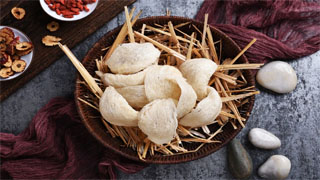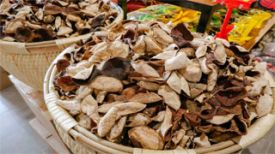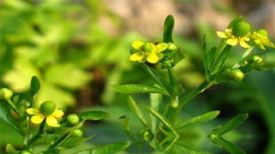
1. Aliases
Bird's Nest Vegetables, Swallow's Nest Vegetables, Swallow Roots, Swallow Vegetables.2. Animal morphology
The body length is about 9 centimeters. The mouth is dark brown, short in shape, slightly curved, and the base is wide. Back brown black, slightly glossy; The waist is relatively light; Abdominal gray white or reddish brown. The wings are long and pointed, and when the wings are closed, the wing end far exceeds the tail end; The tail is short, and the tail feathers are slightly square. Extremely weak feet, with all four toes facing forward.
3. Origin distribution
Commonly found in tropical coastal areas, nests and settlements are built in deep and dark caves on islands. Distributed in Southeast Asia and various islands in the Pacific.
4. Harvesting and processing
Collect between February, April, and August. The Golden Swallow lays eggs in April every year, and before laying eggs, it must build a new nest. At this time, the mucous glands in its throat are very developed, and the nest built is purely made of solidified mucus, with a white and clean color, known as the "White Swallow"; At this point, if plucked, the golden swiftlet immediately builds a second nest, often with some down feathers and a darker color, known as the "hairy swiftlet"; Sometimes blood stains can also be seen, known as "blood swallows".
5. Characteristics of medicinal herbs
The intact one has an irregular crescent shape, measuring 6.5-10 centimeters in length and 3-5 centimeters in width, with a concave pocket shape. The side attached to the rock is relatively flat, slightly raised on the outside, and the adhesive layer on the attachment surface is arranged neatly, more raised and detailed, in a wavy shape. The interior of the nest is rough, resembling a sponge gourd network. Hard and brittle in texture, with a slightly keratinized cross-section. Scattered bird's nest appears in a fragmented or granular form, resembling white or yellowish white. When entering water, it becomes soft and swollen. The white swallow is pure white, occasionally with a few down feathers; Mao Yan is gray with many gray black feathers inside; The blood swallow contains reddish brown blood streaks. Mild in flavor and slightly salty in taste.
6. Nature, taste, and meridian tropism
Mild in nature and sweet in taste. Return to the lung meridian, stomach meridian, and kidney meridian.
7. Effect and function
Nourishing yin and moistening dryness, nourishing qi and nourishing the middle. A tonifying yin medicine belonging to the subcategory of tonifying deficiency medicine.
8. Clinical applications
Dosage of 3-9 grams, stir fry in silk, steam or add ointment. Used to treat deficiency and damage, tuberculosis and cough, phlegm and asthma, hemoptysis, vomiting blood, chronic dysentery, chronic malaria, choking and nausea.
9. Pharmacological research
Experiments have shown that bird's nest extract has antiviral, antihypertensive, and nourishing effects. However, it has not yet been found that bird's nest protein has special nutritional value.
10. Chemical composition
It contains several types of proteins, with nitrogen distribution as follows: amide nitrogen content of 10.08%, humic acid nitrogen content of 6.68%, arginine nitrogen content of 19.35%, cysteine nitrogen content of 3.39%, histidine nitrogen content of 6.22%, lysine nitrogen content of 2.46%, monoammonia nitrogen content of 50.19%, and non ammonia nitrogen content of 7.22%. Also containing aminohexose and substances similar to mucin. Calcium, phosphorus, potassium, and sulfur are predominant in ash content.
11. Taboos for use
Not yet clear, use medication with caution.
12. Compatibility prescription
① Treating body deficiency and spontaneous sweating: 20g of Astragalus membranaceus and 5g of bird's nest. Boil and take twice a day. (Chinese Animal Medicine)
② Treatment of body deficiency and fatigue: stewed chicken with bird's nest. (Yi Medicine Animal Medicine)
③ Treating cough caused by deficiency and fatigue: two coins for sand ginseng, two coins for bird's nest, and five coins for lily. Stew together until tender. (I Don't Know Medical Necessity)
④ To treat pulmonary tuberculosis and hemoptysis: 10g of bird's nest, 20g of lily, and an appropriate amount of rock sugar. Steamed, consumed once, taken twice a day. (Chinese Animal Medicine)
⑤ Treating elderly phlegm and asthma: Take one autumn pear, remove the heart, put it into the bird's nest for one yuan, soak it in boiling water first, and then steam it with rock sugar for one yuan. Take it every morning without interruption. (Wen Tang Ji Yan Fang)
⑥ To treat silent mouth dysentery: two cents for white swallow's nest, four cents for ginseng, and seven cents for water. Stew over the soup and eat slowly. ("The Sea of Life Saving")
⑦ Treatment for malaria in the elderly and chronic malaria, deficiency malaria in children, and fetal fever: three yuan for bird's nest and half yuan for rock sugar. Eat several meals. (Trial Formula for Compilation of Internal Classics)
⑧ Urinary frequency: 10g of bird's nest, 5g of Yizhiren, and 5g of cuttlebone. The last two dishes are ground and steamed together with bird's nest. (Chinese Animal Medicine)
The content of the article is for clinical reference only. Non professionals in traditional Chinese medicine are not allowed to try medication.


